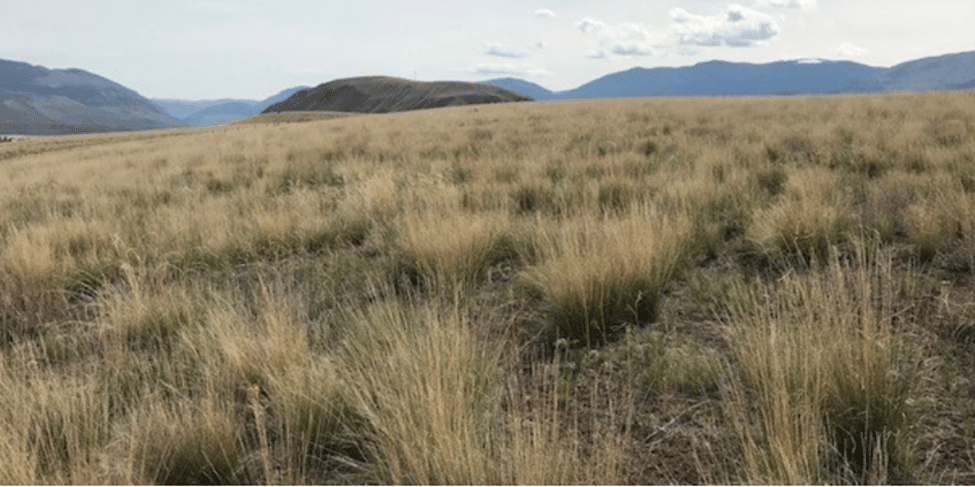By Lara Phillips| May 8, 2023
Join us every week during Invasive Species Action Month as we look at wins in the world of invasive species.
People from across BC and beyond hold painful memories of the devastating 2017 Elephant Hill Wildfire. Almost 192,000 hectares were burned in 75 days, destroying many homes and large swaths of forest, tragically displacing people and wildlife on public, First Nations and private lands. Despite the widespread damage, invasive plants in the area survived with ease, creating concerns for biodiversity, wildlife, soil stability, and range productivity. Several rehabilitation efforts took place following the wildfire, including public safety and rebuilding efforts, re-seeding of roadsides by the Ministry of Transportation and Infrastructure, and invasive plant management by the Ministry of Forests.
Another key initiative, developed by the Thompson Nicola Regional District (TNRD), was the Elephant Hill Wildfire Invasive Plant Program, created to mitigate the impacts of invasive species in areas affected by wildfire. Program funding was provided by the Canadian Red Cross over three years, beginning in 2019. A wide range of management activities were implemented – such as post-fire aerial and hand-seeding, high priority invasive plant treatments, enhancement of biological controls, and extensive monitoring – in collaboration with First Nations and other jurisdictions. The program also focused heavily on public outreach. Numerous events were held to visit and gather input from landholders and the community, conduct media interviews, and distribute information.

The success and impact of this program was remarkable! It helped more than 100 landholders and enabled hundreds of kilometers of roadways to be treated for invasive species. But disaster struck again in 2021, when another devastating wildfire season ripped through the TNRD, affecting about 10 percent of the region’s area. The big increase in wildfire activity further emphasized the importance of including invasive plant management activities in wildfire recovery efforts.
In the invasive species world, we often say ‘invasive species know no boundaries.’ As we encounter increasing challenges on the land, it is important to look back on the success of programs like the Elephant Hill Wildfire Invasive Plant Program as a guide for future management. One key message came through loud and clear: coordinating and working together in harmony is necessary to effectively protect and care for the land.
Lara Phillips is a Special Projects Lead at ISCBC. An avid trail runner and backcountry enthusiast, she feels most at home amongst nature and cares deeply about protecting BC’s diverse ecosystems. You can reach Lara at lphillips@bcinvasives.ca
Share


















